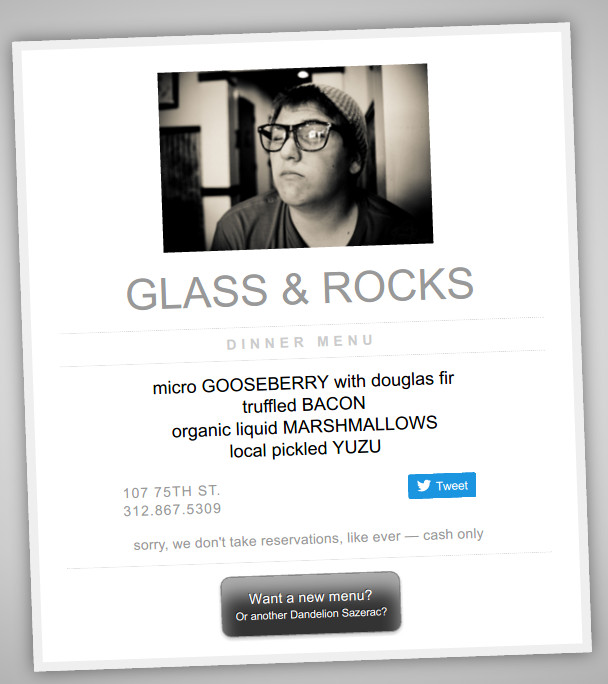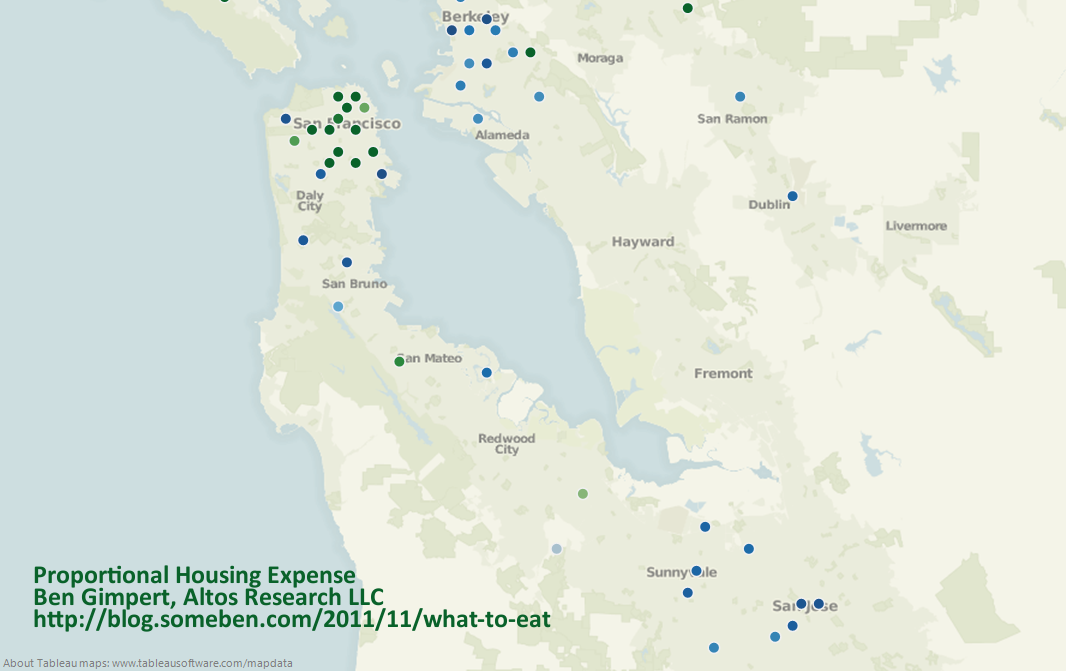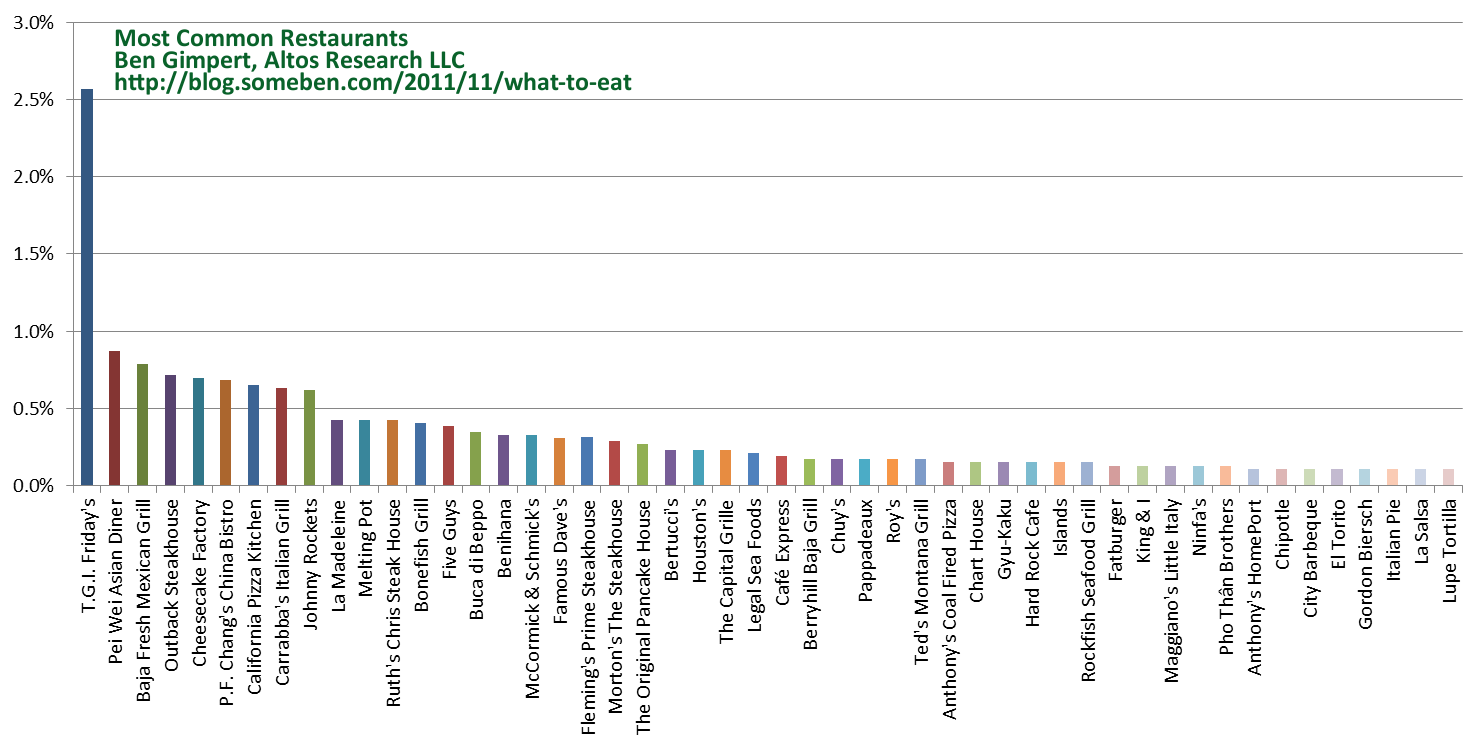Wanna go to that kaiseki in The Mission? They have a 7 address, so our whole crew will be there.
My ‘rents just moved into the 123 High Street building. Now we can meet at the pub on the corner.
He does not stand a chance of a getting a star in Fam Three. The empty storefront next door is in Fam Five, though.
I expect us to be playing whack-a-mole with this pandemic for a few years, and am worried some indulgences of modern life will never come back. For example, fine dining is damn-near-impossible to do virtually. I have a background in the hospitality industry, and have had the privilege to eat some amazing meals in my life. So this is personal.
Now by fine dining, I mean the by-definition pretentious, wasteful, and amazing conversation between diner and chef via the medium of tiny bites on giant white plates. A prix fixe or à la carte menu enjoyed with wine & company over a few luxurious hours. Including the dreaded communal table thing too, I guess. But how are we going to eat at fancy restaurants while we continue to socially distance? And how are restaurant employees going to get back to making a (modest) living? Take-out fried chicken & cocktails from a Michelin star place desperate for cash flow just ain’t financially sustainable. Crenn is doing fancy comfort food like it’s October of 2001, but how is she going to pay rent in Russian Hill on $55 per head?
Lately a lot of my research is connecting a company’s stock price with the digital exhaust left when we interact with the world. A challenging part of the job is controlling for the bias in a cohort of people. When is a group actually representative of a population, or actually random? So while I am nothing close to a computational epidemiologist, and while every machine learning & data scientist is pretending to be a virus expert this week, I have one idea that might help with fine dining while we are in social isolation.
Take a Number for Going Out
 Imagine getting your driver’s license or passport checked at the entrance of a restaurant, where they confirm one simple fact: What is the last, right-most, least-significant digit of your mailing address? (Ignore fractions.) This digit is your membership in an slightly-different, in-real-life family — in which of ten virtual neighborhoods do you arbitrarily belong? And importantly, does your number match the last digit of the restaurant’s address? If the two IRL Fam numbers do not match, the restaurant would be mandated to refuse service. That’s it. Think through some implications of this simple restriction:
Imagine getting your driver’s license or passport checked at the entrance of a restaurant, where they confirm one simple fact: What is the last, right-most, least-significant digit of your mailing address? (Ignore fractions.) This digit is your membership in an slightly-different, in-real-life family — in which of ten virtual neighborhoods do you arbitrarily belong? And importantly, does your number match the last digit of the restaurant’s address? If the two IRL Fam numbers do not match, the restaurant would be mandated to refuse service. That’s it. Think through some implications of this simple restriction:
Maintains Social Isolation
When you go out to eat according to IRL Fam number, you are only ever physically near a fraction of the people in the world. And importantly, these people are always a semi-random subset of the same fraction of the population. The only people who are eating at the restaurant tonight are those who have the same number, those who are in the same IRL Fam. You might even get to know each other.
This is different from just going to local restaurants in the your zipcode, where a rando might jump a cab from across town for the restaurant’s particular charm. (This is especially relevant for experimental or avant garde places that have never relied on walk-ins.) The IRL Fam system is also fundamentally different from going to a different, random restaurant every weekend, because in this case you would still be exposed to a random set of people. And this is very different from restricting the number of people in a particular restaurant, simultaneously. A recent study from Cornell showed how even very small classes still would leave the student community highly connected. This would also thrash most restaurant’s finances.
What’s an address in 2020?
We could theoretically assign a random number, or use your mobile phone number, or even (shudder) use a Social Security number. However, there are additional benefits to using a physical, mailing address for layering our virtual spatial separation atop the existing physical world. Using your mailing address defaults a specific set of people into breaking your social distancing rules: Your roommates, family members, and those in your apartment building. Assuming you still like your kids & spouses after shelter-in-place eases, these are exactly the people you usually want to go out with. And these are the people from whom you are de facto not social distancing from, anyway! You share the same space, breath the same air, push the same elevators buttons, and so on.
What about the service?
This might require that restaurant employees only work full-time, and only at a single establishment. Would employees also need to have a matching IRL Fam? I think that would be too extreme, but goes in the right direction. Maybe we finally abandon the bullshit labor arbitrage of the gig economy, and pass a law establishing full-time de facto employment (i.e. benefits) for anyone who is works 40 hours a week for the same legal entity. San Francisco is already doing this with Uber drivers.
When’s your birthday?
This is no more a violation of privacy than when nightclub security checks the ID of your date who is looking particularly baby-faced tonight… Let’s mandate zero record-keeping or data retention on the IDs themselves, once the IRL Fam number is confirmed. I suppose patrons would need to have an ID with a mailing address on hand, which is a admittedly a bit classist.
Do they have valet parking?
Here is a significant downside. If you are not allowed in 90% of the restaurants in town, you are more likely to drive further to find an interesting one in your IRL Fam.
Is this all a game?
Given the prevalence of mostly-empty nightclubs with long lines, there is a chance the artificial exclusivity of the IRL Fam system would be fun and dramatic. An apartment with an address matching The New Hotness restaurant would be more desirable. And ironically, this exclusivity would be arbitrary and therefore, relatively fair!
Scaling & the Resurgence
This system could start in a traditionally-quirky place like San Francisco, and expand to restaurants & clubs & bars in other cities. And when the next pandemic (resurgence?) inevitably pops up, when the next shelter-in-place mandate occurs, contact tracing via IRL Fam number would be easier.




